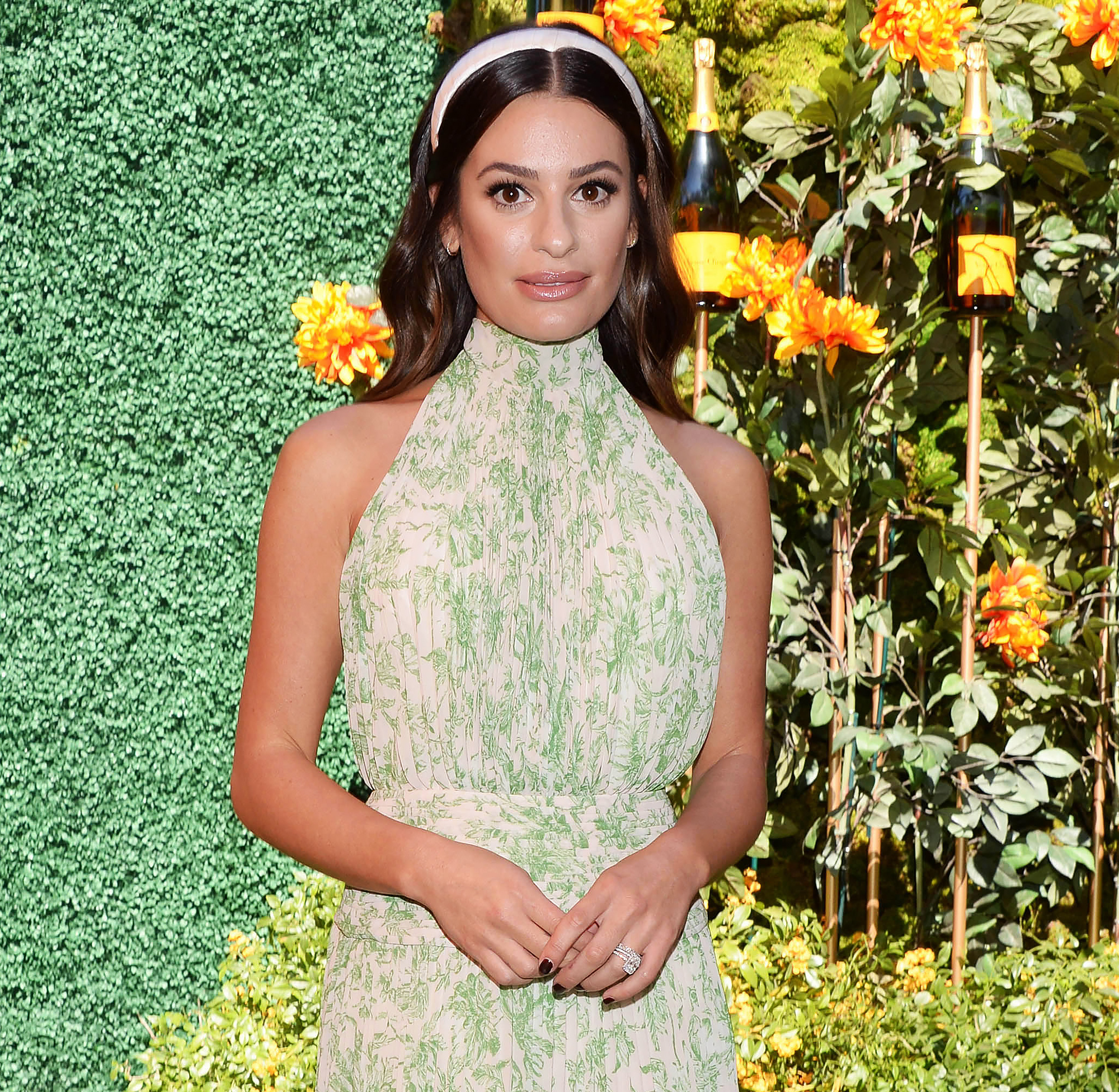Lea Michele Ragtime: A Journey Through Her Musical Legacy
From her early days on Broadway to her iconic role in "Glee," Lea Michele has consistently demonstrated her ability to bring powerful narratives to life through music. Her rendition of songs from the musical "Ragtime" stands out as a testament to her artistry, blending historical storytelling with modern theatrical techniques. This article delves into her remarkable journey, exploring how her interpretation of Ragtime has contributed to her enduring legacy in the entertainment industry.
Throughout her career, Lea Michele has maintained a strong connection to the American musical tradition, particularly through her work with historically significant productions like Ragtime. Her performances not only honor the original material but also bring contemporary relevance to these classic stories. The musical's themes of social justice, immigration, and the American dream resonate deeply with modern audiences, and Michele's interpretation adds a layer of authenticity that few performers can match. Her ability to convey complex emotions through song has made her Ragtime performances particularly memorable.
As we explore Lea Michele's contribution to the Ragtime legacy, we'll examine how her unique vocal style and dramatic presence have redefined these classic numbers for a new generation. From her technical mastery to her emotional connection with the material, Michele's approach to Ragtime demonstrates why she remains one of the most respected voices in contemporary musical theater. This article will provide an in-depth look at her artistic journey, including exclusive insights into her preparation process and the impact of her performances on both critics and audiences alike.
Read also:Discover The Inspiring Journey Of Dr Justin Wendling Expertise Achievements And More
- Biography: The Making of a Broadway Star
- How Did Lea Michele Begin Her Musical Journey?
- What Makes Lea Michele's Ragtime Performance Unique?
- Why Is Ragtime Significant in Musical Theater History?
- The Technical Aspects of Lea Michele's Vocal Performance
- How Does Lea Michele Connect Emotionally with Ragtime?
- Lea Michele Ragtime Style: A New Interpretation
- Why Does Ragtime Remain Culturally Relevant Today?
- What's Next for Lea Michele in Musical Theater?
- Final Thoughts on Lea Michele's Contribution to Ragtime
Biography: The Making of a Broadway Star
Lea Michele Sarfati was born on August 29, 1986, in the Bronx, New York, and began her journey in the performing arts at an exceptionally young age. Her early exposure to theater came through her parents, who were both involved in the arts community. This foundation set the stage for her remarkable career that would eventually lead to her acclaimed performances in musicals like Ragtime. Her dedication to her craft became evident when she made her Broadway debut at just eight years old in "Les Misérables."
| Full Name | Lea Michele Sarfati |
|---|---|
| Date of Birth | August 29, 1986 |
| Place of Birth | Bronx, New York |
| First Broadway Role | Young Cosette in "Les Misérables" |
| Breakthrough Role | Rachel Berry in "Glee" |
Her educational background in performing arts, combined with her extensive stage experience, has contributed significantly to her success in musical theater. Michele's training in both classical and contemporary vocal techniques has enabled her to tackle challenging roles like those in Ragtime with remarkable versatility. Her biography is a testament to the power of early exposure to the arts and dedicated practice in achieving excellence in performance.
How Did Lea Michele Begin Her Musical Journey?
Lea Michele's early career was marked by a series of impressive achievements that laid the groundwork for her future success. At the age of eight, she joined the Broadway cast of "Les Misérables," where she alternated between the roles of Young Cosette and Young Eponine. This early exposure to professional theater taught her valuable lessons about discipline, stage presence, and the importance of maintaining vocal health.
- 1995-1996: Original Broadway cast of "Les Misérables"
- 1998: Featured in "Ragtime" as The Little Girl
- 2004: Originated the role of Wendla in "Spring Awakening"
Her involvement with Ragtime at such a young age was particularly significant, as it introduced her to the complex themes and historical context that would later influence her mature performances. The experience of working alongside seasoned professionals and being part of such a historically significant production helped shape her understanding of musical theater's potential to address social issues through art.
What Makes Lea Michele's Ragtime Performance Unique?
Lea Michele's approach to Ragtime stands out due to her ability to seamlessly blend technical precision with emotional authenticity. Her vocal technique, honed through years of classical training, allows her to navigate the challenging score with apparent ease. However, it's her emotional connection to the material that truly sets her performances apart from other interpretations of the musical.
Unlike many performers who focus solely on technical perfection, Michele brings a depth of understanding to her Ragtime roles that stems from her early exposure to the production. Her interpretation of characters like Mother and The Little Girl reflects a sophisticated grasp of the historical context and social commentary embedded in the musical's narrative. This combination of technical mastery and emotional intelligence creates performances that resonate deeply with audiences.
Read also:Rachael Deltondo Remembering A Life Welllived
Why Is Ragtime Significant in Musical Theater History?
Ragtime holds a special place in American musical theater history as one of the most ambitious and socially conscious productions of its time. The musical, based on E.L. Doctorow's novel, weaves together multiple storylines that explore themes of immigration, racial tension, and the pursuit of the American dream at the turn of the 20th century. Its innovative structure and complex score challenged traditional musical theater conventions when it premiered in 1996.
Lea Michele's involvement with Ragtime spans different stages of her career, from her childhood role as The Little Girl to her more recent interpretations of adult characters. This long-standing relationship with the material has allowed her to develop a nuanced understanding of its historical significance and contemporary relevance. Her performances help preserve the musical's legacy while making it accessible to new generations of theatergoers.
The Technical Aspects of Lea Michele's Vocal Performance
Lea Michele's technical mastery of vocal performance is evident in every note she sings in Ragtime. Her classical training provides her with the foundation to execute the musical's demanding score with precision and control. Her range, which spans three octaves, allows her to tackle the challenging vocal lines with apparent ease.
Several key technical elements contribute to her success in Ragtime performances:
- Perfect pitch and intonation control
- Exceptional breath support and phrasing
- Mastery of dynamic expression
- Ability to maintain vocal health during demanding performances
These technical skills, combined with her dramatic training, enable her to deliver performances that are both vocally impressive and dramatically compelling. Her approach to Ragtime demonstrates how technical mastery can serve the storytelling rather than overshadow it.
How Does Lea Michele Connect Emotionally with Ragtime?
Lea Michele's emotional connection to Ragtime stems from her deep understanding of the musical's historical context and its relevance to contemporary social issues. Having grown up in the theater world, she brings a level of authenticity to her performances that resonates with audiences. Her personal experiences as a performer and her awareness of social justice issues inform her interpretation of the musical's themes.
During her performances, Michele employs several techniques to maintain emotional authenticity:
- Extensive research into the historical period
- Personal reflection on social justice issues
- Collaboration with fellow cast members to build genuine relationships
- Maintaining awareness of current events that parallel the musical's themes
This emotional connection allows her to create performances that feel immediate and relevant, bridging the gap between historical narrative and contemporary experience.
Lea Michele Ragtime Style: A New Interpretation
Lea Michele has developed a distinctive style in her approach to Ragtime that sets her apart from previous interpretations of the musical. Her style combines elements of classical musical theater with contemporary performance techniques, creating a fresh perspective on these classic numbers. This unique approach has helped introduce Ragtime to new audiences while maintaining its historical integrity.
Several key elements define Michele's Ragtime style:
- Blending traditional Broadway techniques with modern vocal styles
- Incorporating subtle jazz influences that reflect the musical's historical context
- Using physical performance to enhance vocal expression
- Emphasizing the emotional truth of each moment rather than technical perfection
Her interpretation of Ragtime characters demonstrates how a performer can honor the original material while bringing their unique perspective to the role. This balance between tradition and innovation has become a hallmark of Michele's approach to musical theater.
Why Does Ragtime Remain Culturally Relevant Today?
Ragtime continues to resonate with modern audiences due to its exploration of themes that remain pressing in contemporary society. The musical's examination of immigration, racial tension, and the pursuit of the American dream speaks directly to current social issues. Lea Michele's performances highlight these connections, making the historical narrative feel immediate and relevant to today's theatergoers.
Several factors contribute to Ragtime's enduring relevance:
- Its exploration of systemic racism and social justice
- Themes of immigration and cultural integration
- Examination of class differences and economic inequality
- Reflection on the evolving nature of the American dream
Through her performances, Lea Michele helps audiences connect these historical themes to current events, demonstrating the power of musical theater to foster social awareness and understanding.
What's Next for Lea Michele in Musical Theater?
As Lea Michele continues to evolve as an artist, many wonder what future projects might await her in the realm of musical theater. Her success with Ragtime and other productions suggests that she will likely continue to challenge herself with complex, socially relevant material. Industry insiders speculate that she may take on more producing roles in addition to performing, potentially bringing new works to Broadway stages.
Possible directions for her future work might include:
- Developing new musicals that address contemporary social issues
- Returning to classic roles with fresh interpretations
- Expanding her work in film adaptations of musical theater
- Mentoring young performers through master classes and workshops
Regardless of her specific path, Michele's continued involvement in musical theater promises to bring thoughtful, engaging performances that honor the art form's traditions while pushing its boundaries forward.
Final Thoughts on Lea Michele's Contribution to Ragtime
Lea Michele's contribution to the legacy of Ragtime stands as a testament to her artistic growth and commitment to meaningful storytelling through music. From her early days as The Little Girl to her mature interpretations of complex characters, she has consistently demonstrated how musical theater can serve as a powerful vehicle for social commentary and emotional connection. Her performances have not only preserved the musical's historical significance but have also made it accessible to new generations of theater enthusiasts.
As the entertainment industry continues to evolve, artists like Lea Michele remind us of the enduring power of musical theater to address important social issues while providing exceptional artistic experiences. Her work with Ragtime exemplifies how a performer can honor tradition while bringing fresh perspectives to classic material. Whether through her vocal technique, dramatic interpretation, or emotional authenticity, Michele's approach to Ragtime continues to inspire both audiences and fellow performers alike.
Exploring The Timeless Style Of Michael Jackson Fits
Mike White News: A Comprehensive Look At The Rising Star
Zach Braff Sister: Exploring Her Life, Career, And Connection To The Famous Actor

Lea Michele Biography, Height & Life Story Super Stars Bio

Lea Michele Accused of Making ‘Ragtime’ Understudy ‘Cry Every Night